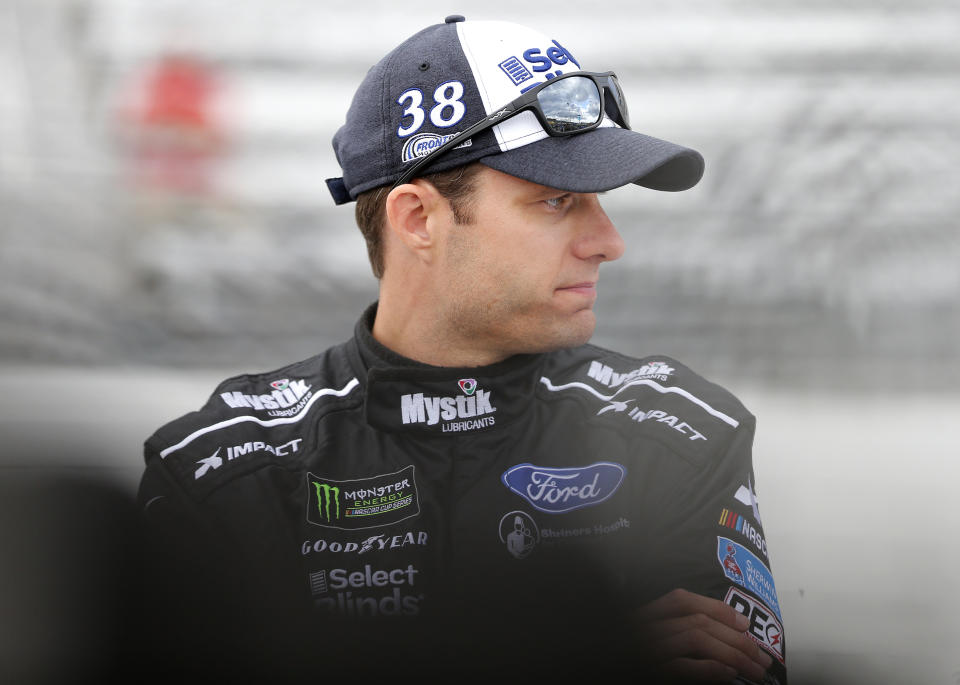David Ragan thinks parity has decreased during his NASCAR career. And he's right.

David Ragan thinks the Cup Series field is currently more spread out than it was when he first entered the top level of NASCAR.
Ragan, a two-time winner, is preparing to make what could be the final two starts of his career over the last two races of 2019. Ragan is stepping away from full-time driving at the end of year. While he hasn’t ruled out a part-time foray back into NASCAR, Ragan, 33, said he’s done driving full-time to spend more time with his family.
Ragan made his first Cup Series start when he was 21 in 2006. He was asked Friday what has changed most in the Cup Series over his 13-plus years in the series. And he had a revealing answer.
“The first thought that comes to my mind is I feel like the field is separated a little bit more,” Ragan said. “I feel like when I first came into this sport you had guys that could run in the mid-20s every week, but if they hit the right setup they had the potential in their race car to run in the top five or win a race. You saw that on occasion with some one-off winners at different tracks, and I think that’s harder than ever today because the top two or three teams with so many rule changes that we’ve had the last couple of years, they have separated themselves from the rest of the pack, but that separation is not that big. It’s only a few tenths, but that’s a very important couple a tenths of a second, so you don’t see that many surprise winners anymore, at least not from my perspective in the last few years.”
Ragan is right
Ragan has spent the majority of the second half of his career at Front Row Motorsports, a team that doesn’t have the strongest equipment. So he’s well-positioned to make an observation like this. And the stats back him up, especially when you look outside the top five.
Twenty-one drivers had 10 or more top-10 finishes in 2006 while a whopping 39 drivers had at least two top-10 finishes. Nine drivers had an average finish better than 15th.
Fast-forward to 2019 and there are just 18 drivers with 10 or more top-10 finishes with two races remaining in the season while 28 drivers have two or more top-10 finishes. Fourteen drivers have an average finish better than 15th while 22 drivers have an average finish inside the top 20. In 2006, just 17 drivers had an average finish better than 20th.
So yes, your eyes aren’t deceiving you. The chasm between the haves and the have-nots in the Cup Series has gotten bigger for myriad reasons, even if cars are closer than they’ve ever been on the timing sheets.
“Obviously, a Daytona or Talladega can be a little bit of a crapshoot, but even there you don’t see that anymore, certainly at a track like Phoenix or a short track or even at a road course,” Ragan continued. “I felt like there was 12, 13 years ago you could be 25th in points and just have a mediocre season going, but you hit it just right and you had the potential to get up there to the top five. I think that’s kind of gone away and I feel like the biggest reason is some of the rule changes, those top two or three teams have broken away from everyone else and also they are so smart they don’t make many mistakes like they used to.
“So I think a combination of those two or three things has allowed two or three teams to win all the races, and I think NASCAR has identified that and from my perspective I feel like they’re making some adjustments with this [2021] car that will hopefully address some of that because I think it would be good for the entire sport. I don’t think those top two or three teams would like to have some other guys have chances to win, but I think it’s healthy when you can have 14 to 16, 17 different winners and on some different teams throughout the season.”
– – – – – –
Nick Bromberg is a writer for Yahoo Sports
More from Yahoo Sports:


